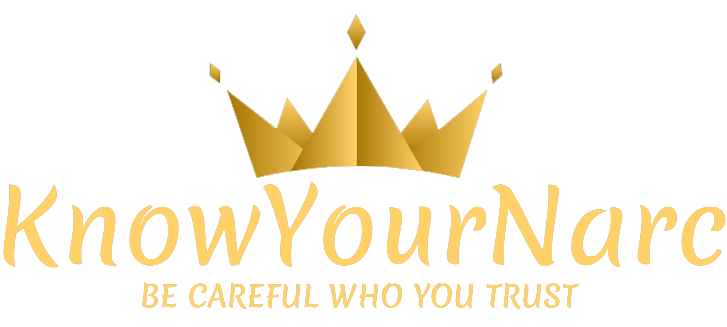Starting the no contact rule can feel like stepping into uncharted territory. Whether you’re trying to heal from a breakup, set boundaries, or simply need a fresh start, those first 30 days can be a rollercoaster of emotions and unexpected challenges. In this article, we’ll walk you through what to expect during this crucial first month — from the initial waves of longing to the gradual rebuilding of your own peace and clarity. Think of it as your friendly guide to navigating the early days of no contact with kindness and confidence. Let’s dive in!
Table of Contents
- What Happens Emotionally When You Go No Contact
- How to Manage Cravings to Reach Out Without Breaking No Contact
- Building Healthy New Routines to Support Your Healing
- Tips for Staying Strong When Friends or Family Ask Questions
- In Summary
What Happens Emotionally When You Go No Contact
Stepping into the no contact phase often feels like an emotional rollercoaster. Initially, you might experience a whirlwind of feelings—confusion, anger, sadness, and even relief all at once. It’s completely normal to face waves of intense emotions as your mind tries to process the sudden absence of communication. Your brain is essentially rewiring itself to function without the familiar patterns of interaction, which can leave you feeling disoriented. This emotional turbulence is a sign that healing has begun, even if it doesn’t feel pleasant right away.
During this time, you might notice:
- Cravings for connection: Moments where the urge to reach out feels overwhelming.
- Heightened sensitivity: Small triggers might send your mood swinging unexpectedly.
- Self-doubt and reflection: Wondering if the choice to go no contact was right.
Remember, these feelings are temporary and an important part of regaining control. Embracing them with compassion will help you emerge stronger and more self-aware as each day passes.
How to Manage Cravings to Reach Out Without Breaking No Contact
When the urge to reach out hits, remind yourself it’s a natural part of healing—acknowledging the craving without acting on it is essential. Distract yourself with activities that engage your mind and body like going for a walk, journaling your feelings, or calling a supportive friend. Keep a list handy of these quick, satisfying distractions to turn to when the temptation feels overwhelming. Remember, each moment you resist strengthens your emotional resilience, making the path to peace smoother.
Another powerful strategy is to reframe your thoughts by focusing on why you started no contact in the first place. Write down your reasons and read them aloud whenever the urge to break your boundary creeps in. You might also try visualizations—picture yourself feeling calm and empowered after sticking to no contact. Uniting these positive affirmations with calming rituals such as deep breathing or meditation can create a solid buffer against impulsive decisions. This proactive approach turns cravings into opportunities for growth.
- Have ready a “craving kit” filled with comforting items or distractions
- Log your cravings to track emotional triggers
- Connect with a support group — sharing helps lessen the burden
- Set small daily goals to celebrate your no contact victories
Building Healthy New Routines to Support Your Healing
As you navigate this challenging period, embracing fresh habits can serve as a powerful anchor for your emotional recovery. Start by incorporating activities that nourish your mind and body—think morning walks, journaling your thoughts, or whipping up healthy meals. These small, intentional steps reinforce a sense of control and gently remind you that your well-being is a priority. Remember, it’s not about perfection but progress; celebrate each moment you choose self-care over old patterns.
Consider creating a flexible daily structure that scaffolds your day with positive rituals. This might look like:
- Mindfulness or meditation exercises to center your thoughts
- Connecting with supportive friends or groups to break isolation
- Engaging in hobbies or creative outlets to spark joy and distraction
- Setting small achievable goals that promote growth and self-confidence
By integrating these routines, you’re not only healing but also building a resilient foundation for the chapters ahead. Your new routines are an act of kindness to yourself—honoring your journey and the promise of brighter days.
Tips for Staying Strong When Friends or Family Ask Questions
When people close to you begin asking questions, it can feel like your resolve is being tested. It’s important to remember that their curiosity usually comes from concern rather than judgment. Stay calm and grounded by having a clear, concise explanation ready. You don’t owe anyone detailed accounts—sometimes a simple, “I need this time to focus on myself,” is enough. Keep your tone gentle but firm, and avoid getting drawn into debates that drain your energy. Healthy boundaries here are your best friend.
Another helpful approach is to redirect conversations toward your well-being. Share how the no-contact period is helping you grow or clarify your goals without oversharing. If you feel overwhelmed, try these subtle strategies:
- Use empathetic statements like, “I appreciate your concern.”
- Change the subject to hobbies or plans you are excited about
- Limit the time you spend engaging on this topic
- Remind yourself that maintaining your peace is priority
This way, you protect your emotional space while keeping relationships intact. Staying strong doesn’t mean shutting people out; it means honoring your process in a way that feels right for you.
In Summary
Navigating the first 30 days of no contact can feel like a rollercoaster — full of ups and downs, moments of clarity, and unexpected emotions. But remember, this period is all about giving yourself the space to heal, reflect, and regain your sense of self. Be patient with yourself, lean on your support system, and celebrate the small victories along the way. No contact isn’t just about distance; it’s about finding your way back to peace and clarity. Keep going—you’ve got this!

